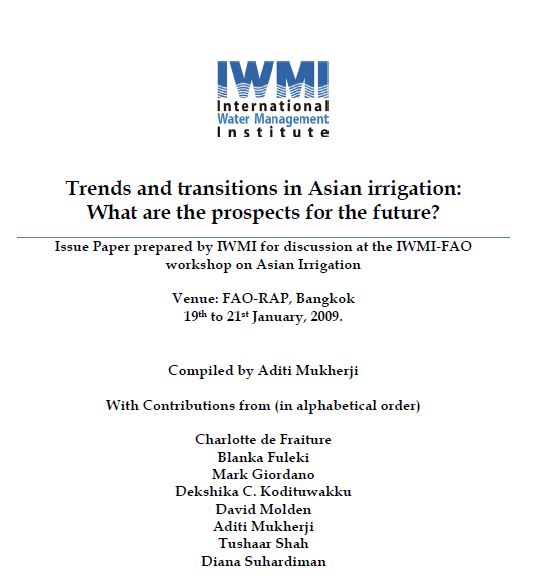Trends and transitions in Asian irrigation: What are the prospects for the future?
While irrigation has been central to the agricultural economies of Asia, the sector is under serious threat due to a number of reasons. For one, more and more countries of Asia face the threat of physical water scarcity and those who do not, are crippled by economic scarcity of water. Surface irrigation infrastructure has deteriorated due to lack of maintenance which often is a reflection of changing requirements of farmers that gravity flow irrigation can no longer provide. Crop diversification away from rice and wheat means that gravity irrigation structures constructed keeping in mind cereal crops do not readily adapt themselves to a more diversified cropping pattern that farmers in Asia are now moving towards. Massive efforts towards rehabilitation and more recently towards modernization of gravity flow systems have yielded less than satisfactory results. Irrigation reforms in the form of irrigation management transfer (IMT) or participatory irrigation management (PIM) have failed to deliver the promise of better and efficient delivery of irrigation services in South Asia, though they do hold promise in regions like Central Asia. While there are calls for ‘reforming the reform process’ (Molden, 2007), this paper takes a step further and calls for morphing or adapting existing gravity irrigation systems to changing socio-economic realities. Globalization, urbanization, climate change, competing demands for water, changing aspirations, renewed emphasis on environmental water needs and the need to keep feeding millions of people in Asia continue to offer great challenges to the irrigation and drainage sector in Asia. The Asian countries and regions differ greatly from one another in terms of climate (arid vs. semi arid vs. monsoonal climate), economy (agricultural vs. industrialized; developing vs. developing vs. economies in transition), politics (multi party democracy vs. centralized system), development outcomes (poverty, child mortality, nutrition etc.). For the purpose of this analysis, Asia has been divided into four units, viz. South Asia, South East Asia, East Asia and Central Asia.
